In early spring, when the snow has just melted, crocuses are among the first to bloom in the garden. These beautiful bulbous flowers represent the arrival of spring. They look spectacular on lawns and flower beds, are suitable for alpine slides and can be a decoration for any flower garden. Growing crocuses in the open field is not difficult even for inexperienced gardeners, so they can often be found in summer cottages and backyards.
Content
Description, varieties and photos of crocuses
Crocus or saffron belongs to the iris family and is a bulbous plant... This undersized primrose reaches a height of 10 cm. crocus flowers bloom on a short peduncle and can be orange, yellow, purple, purple, blue, cream or white. Scaly and bunched root narrow leaves appear before or after flowering.
Crocuses are divided into spring-flowering and autumn-flowering species. Recently, among gardeners, the most popular varieties are Dutch hybrids.
Spring blooming crocuses
Among the spring primroses, one can distinguish the four most famous types:
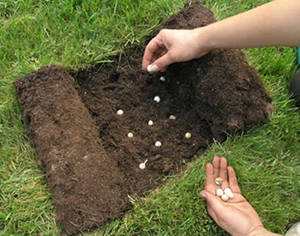 Crocus Tomisani blooms for three weeks in April. It is distinguished by flowers 6 cm high in the shape of a star and pink-lilac perianths. One corm develops from one to three flowers.
Crocus Tomisani blooms for three weeks in April. It is distinguished by flowers 6 cm high in the shape of a star and pink-lilac perianths. One corm develops from one to three flowers.- The golden crocus blooms with golden yellow flowers for about twenty days in April, grows up to 20 cm and has very narrow leaves. The corm of the plant is spherical, but slightly flattened.
- Two-flowered crocus is distinguished by flowers of various shapes and colors. They can be white with brownish-purple streaks, lilac-blue, or white with brown spots. The pharynx of flowers is most often yellow or white.
- Spring crocus blooms in early spring for about three weeks. One or two purple or white flowers develop from one corm. The plant grows up to 17 cm, has dark green leaves with a silvery stripe and a flattened corm.
Autumn blooming crocuses
Among the plants blooming in September or October the most popular are three types:
- The Banat crocus has flowers of a light lilac color, the height of which can be up to 14 cm. The linear leaves of the plant grow up to 15 cm, and have a gray-silver shade.
- A pretty crocus, 7-10 cm high and 6-8 cm in diameter, has light flowers with dark purple stripes. The plant is not afraid of light frosts and forms from 5 to 10 flowers on one corm.
- The beautiful crocus is known for its light purple, lilac, blue, white and dark blue flowers. Its leaves are 30 cm long.
Crocuses: planting and care in the open field
Crocuses are light-loving plants, therefore it is recommended to grow them in a well-lit place warmed by the sun's rays.For free growth, they need provide a spacious plot of land.
How to choose healthy corms?
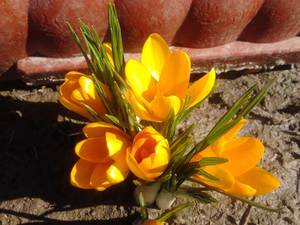 The success of good growth and abundant flowering of crocuses is healthy planting material. When purchasing corms in flower shops, nurseries or markets, you should carefully consider the bulbs. They shouldn't have:
The success of good growth and abundant flowering of crocuses is healthy planting material. When purchasing corms in flower shops, nurseries or markets, you should carefully consider the bulbs. They shouldn't have:
- dark spots;
- rot;
- mechanical damage.
Any defects in the corms must be eliminated by first freeing them from roots and scales. After that, the damaged places sprinkled with loose coal or ash.
In some flower shops crocuses are sold already in bloom. Such a plant may not take root, but simply dry out. To prevent this from happening, it is necessary to cut the flowers, leaves and leave the plant alone. In this case, the crocus will bloom again next year, however, it will be able to fully recover only after two years. Therefore, you need to buy planting material even before it blooms.
Features of planting crocuses
Spring plant species in open ground are planted in the fall, and those blooming in the fall - in the summer.
When planting crocuses, keep in mind that they don't like wetlands and acidic soils. They prefer nutritious, loose, dry, light soil.
When preparing the site for planting crocuses, it is necessary to add to the soil:
- coarse river sand or fine gravel;
- peat with lime or rotted manure;
- ash, if the soil is clayey;
- drainage layer of gravel or rubble if the soil is wet.
Autumn planting
In order for primroses to delight you with their flowering in spring, they need to be planted in a permanent place of cultivation in the fall. This is best done from mid-September to mid-October.
The features of planting corms include:
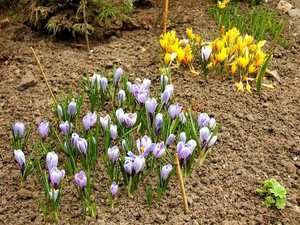 In heavy soil, the bulb hole should be the same size.
In heavy soil, the bulb hole should be the same size.- If the soil is loose, then the hole is made twice the size of the onion.
- The distance between the holes should be 7-10 cm.
- The planted planting material is immediately well watered.
Rules for caring for crocuses in the garden
Growing primroses is not difficult. In order for them to grow well, develop and bloom, you just need follow some recommendations:
- From the moment of germination, plants need regular watering. Despite the fact that crocuses are drought-resistant crops, a lack of moisture during the period of active growth can lead to crushing of corms.
- Leaves should not be removed from the plant until they are completely dry. Otherwise, the flower may weaken.
- In order for new buds to form and crocuses to bloom longer, it is recommended to remove wilted flowers.
- After the leaves wither, caring for primroses consists in mulching the soil between them with dry leaves or a thick layer of peat.
- Every three to four years, primroses need to be planted. During this period of time, many children will grow on the corm. Autumn-blooming crocuses can be planted throughout the summer, and spring-blooming crocuses can be planted from mid-summer to late September.
When can you dig up crocuses?
Spring flowering plants begin their active growth already late winter or early spring... By mid-June, primroses have a dormant period. And in the fall, when crocuses become active again, they begin to accumulate food, grow roots, and form buds. That is why the digging and planting of spring plants should be carried out during the dormant period, which usually lasts almost all summer, starting from mid-June.
In August, the active blooming of autumn-blooming crocuses begins. At this time, they are actively forming new bulbs and growing leaves. Their rest period begins at the end of spring. The digging and planting of autumn blooming plants can be done from early summer to mid-August.
Onions extracted from the soil cleaned of husks and dead roots... Then they need to be dried by spreading them out in one layer in a suitable container.At home, planting material should be kept in a dry, dark room with good ventilation and room temperature.
Crocus pests and diseases
 Growing bulbous plants in compliance with all recommendations, there should be no problems with pests and diseases.
Growing bulbous plants in compliance with all recommendations, there should be no problems with pests and diseases.
Their main enemies are rodents, which like to eat bulbs. Therefore, it is not recommended to leave the planting material laid out for drying unattended.
The same rodents, aphids or thrips can be carriers of a viral disease. A diseased plant can be recognized by the flattened flowers in gray spots. Until other flowers become infected, the corms of the diseased plant must be dug up and destroyed, and the soil must be spilled with a hot solution of potassium permanganate.
While caring for crocuses, holes made by wireworms can be found in the bulbs. If there are a lot of these hard-to-touch yellow larvae on the plant, then you need to get rid of them. For this you can take advantage of homemade traps:
- In the spring, spread bunches of straw, hay or grass mowed last year over the plot.
- Moisten everything and cover with boards.
- After the larvae have moved into these traps, the bundles of grass will need to be collected and burned.
Improper care and damp weather can lead to fungal diseases of primroses. Fusarium, sclerocial or penicillous rot, gray fungal disease can strike them. To avoid such a problem, the planting material must be carefully examined. Before planting, it is recommended to pickle it in a fungicide solution.
Having planted primroses in your area in the fall, you can enjoy their bloom in early spring. But in order for the plants to be really spectacular and bloom beautifully, when planting, growing and caring for them, it is necessary to follow the simple recommendations of experienced gardeners.
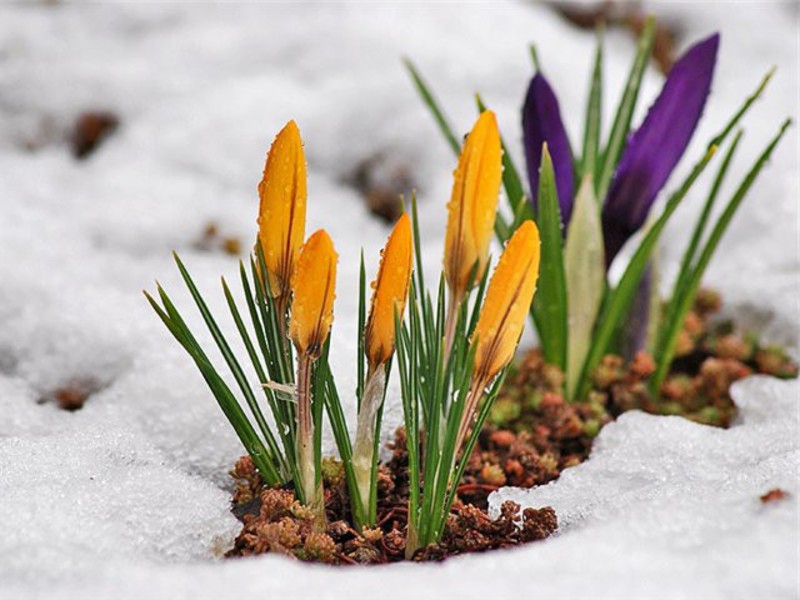
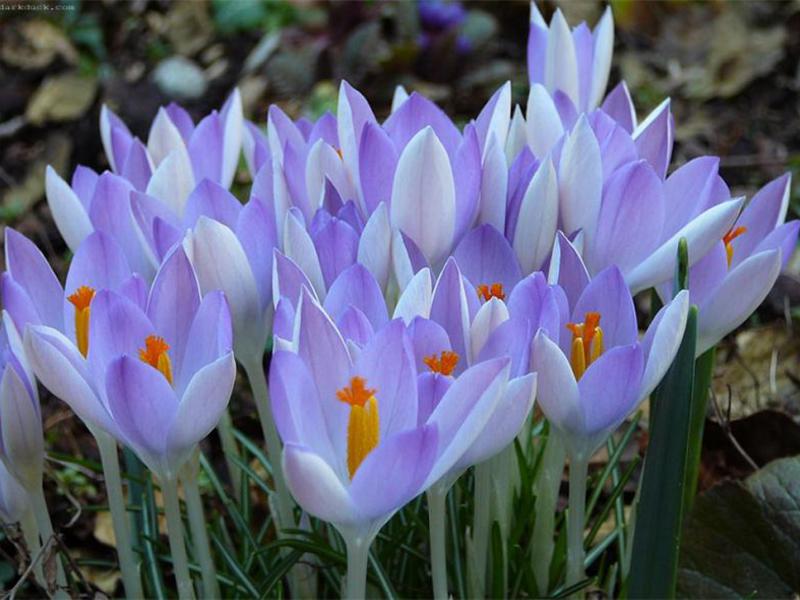
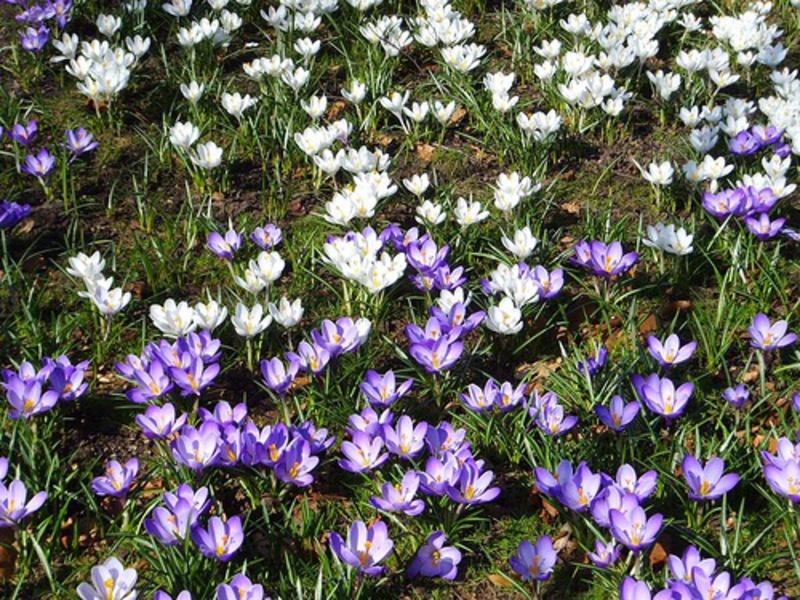
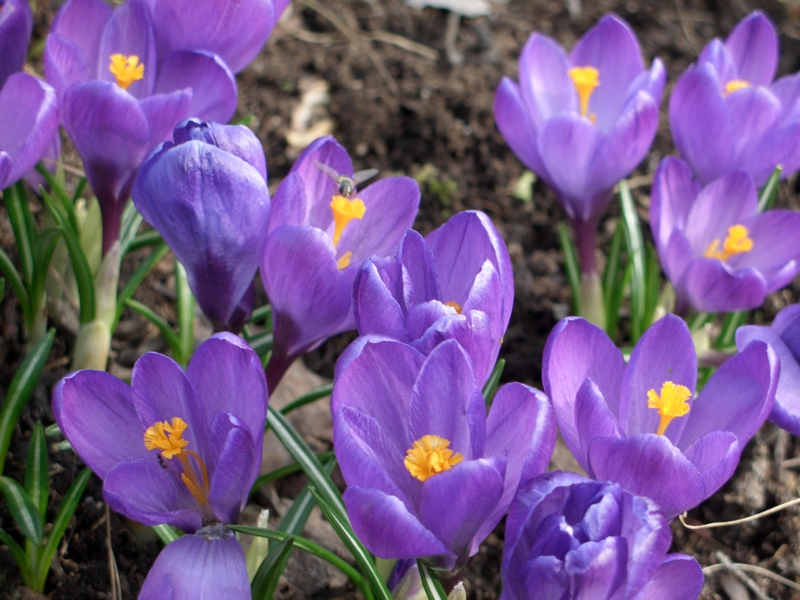
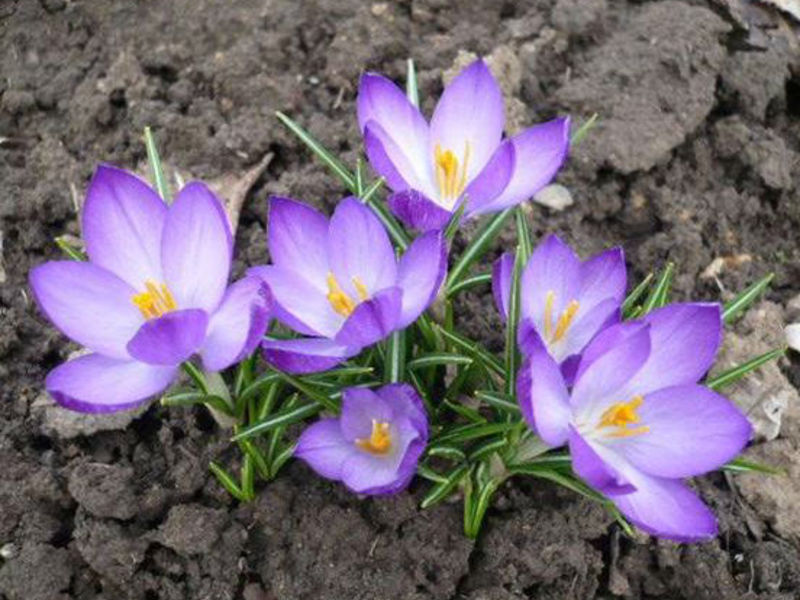
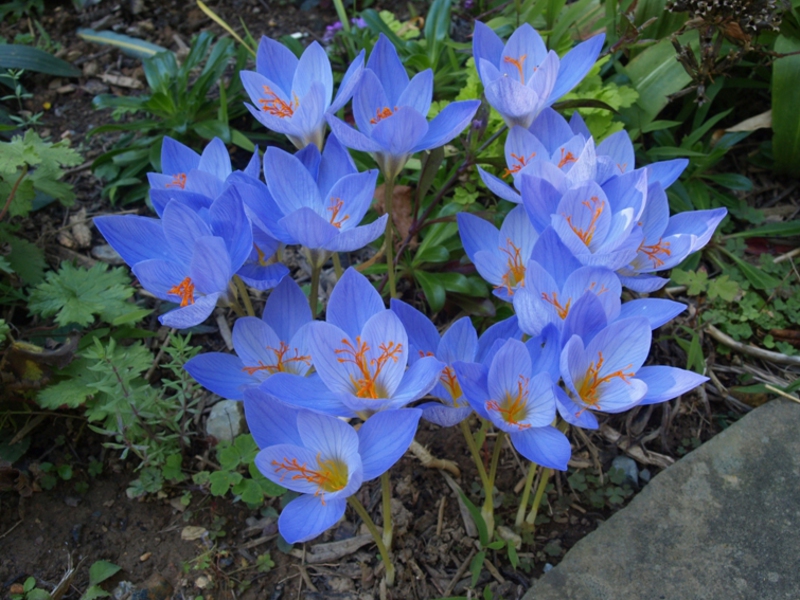
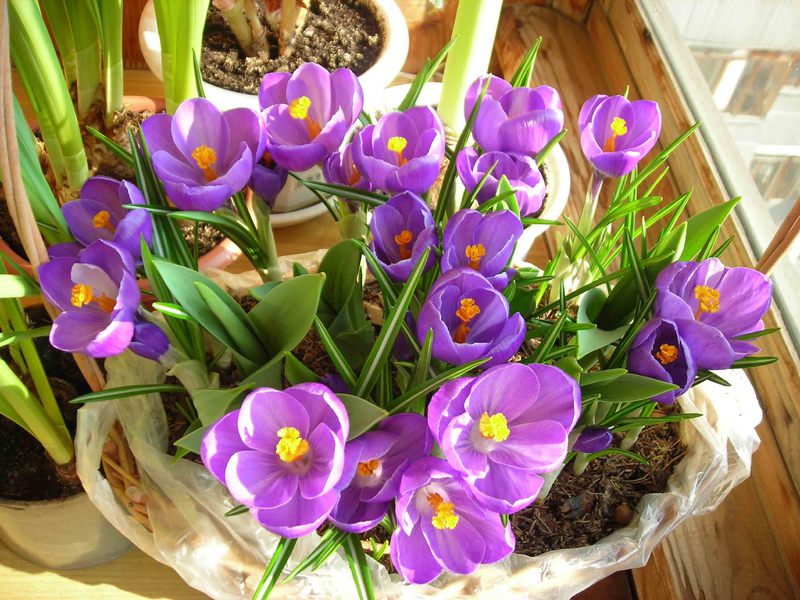
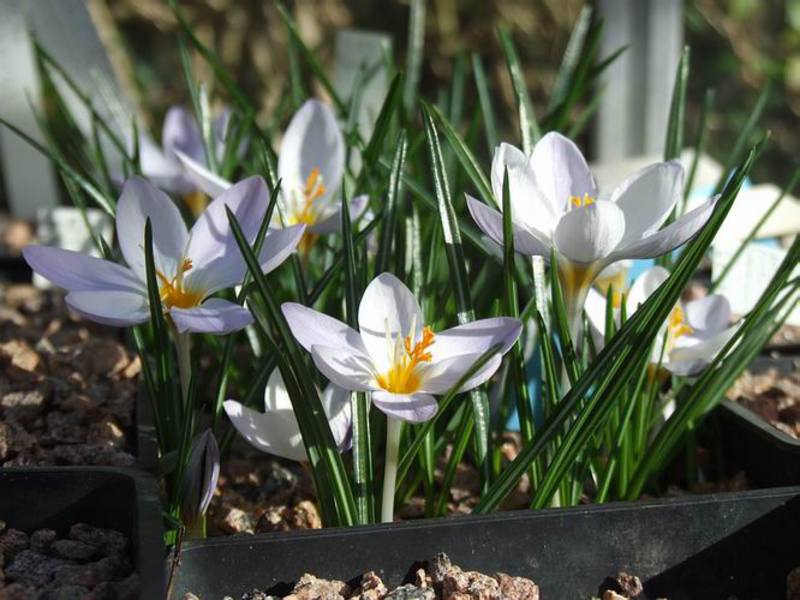
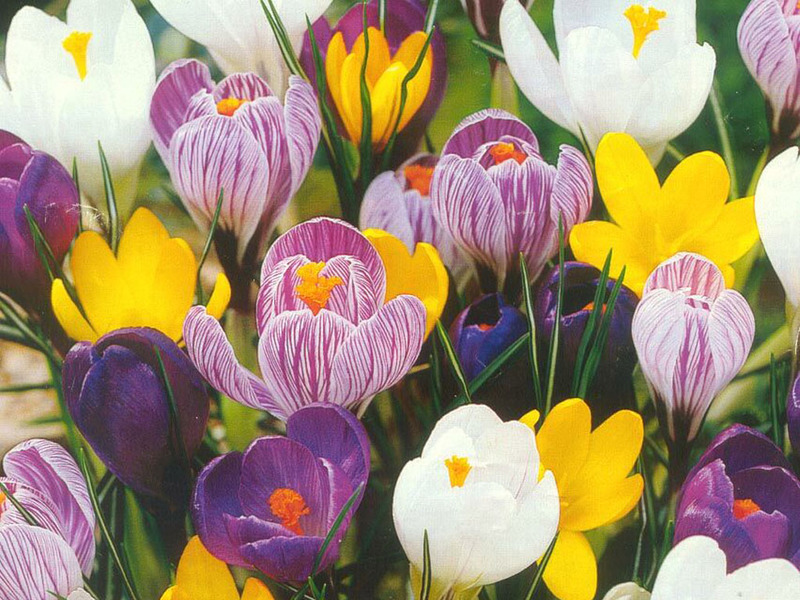
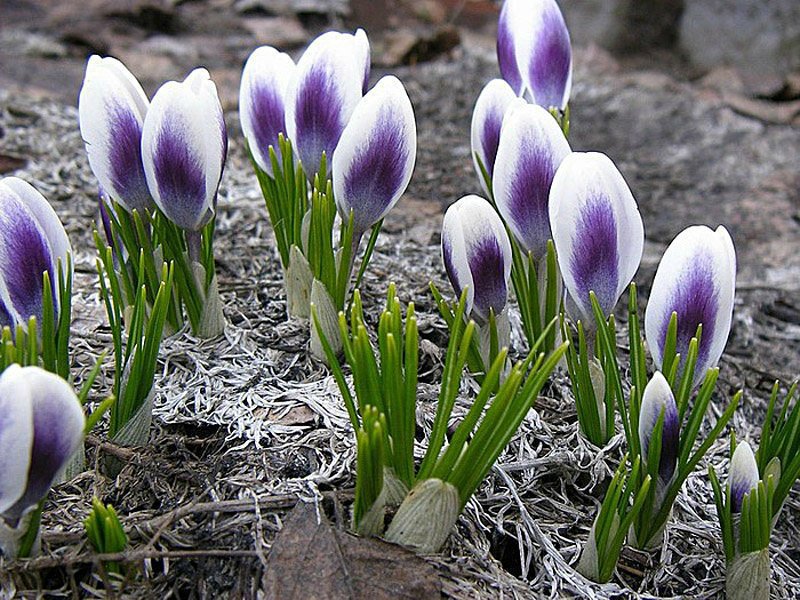
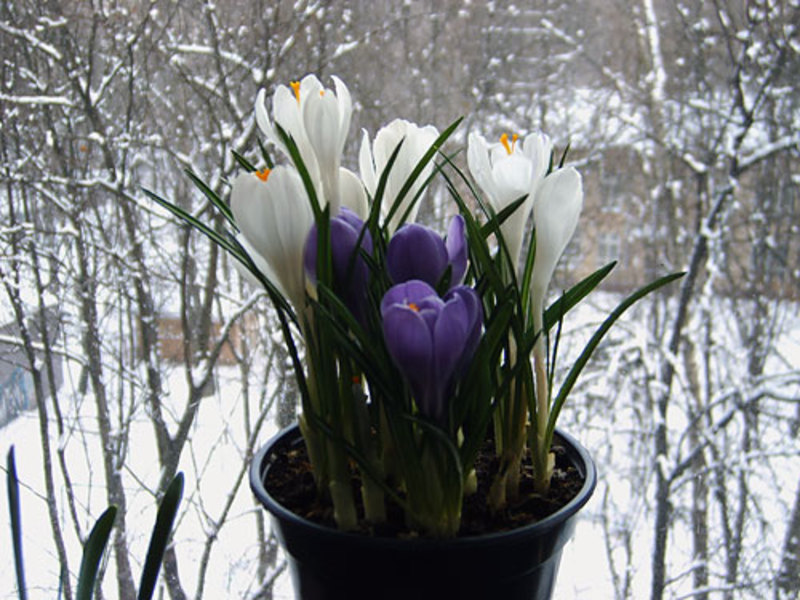
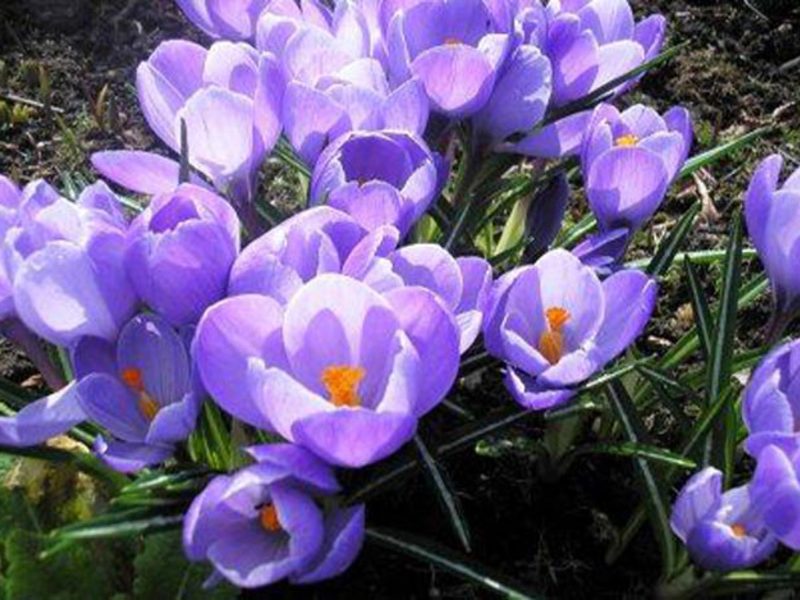

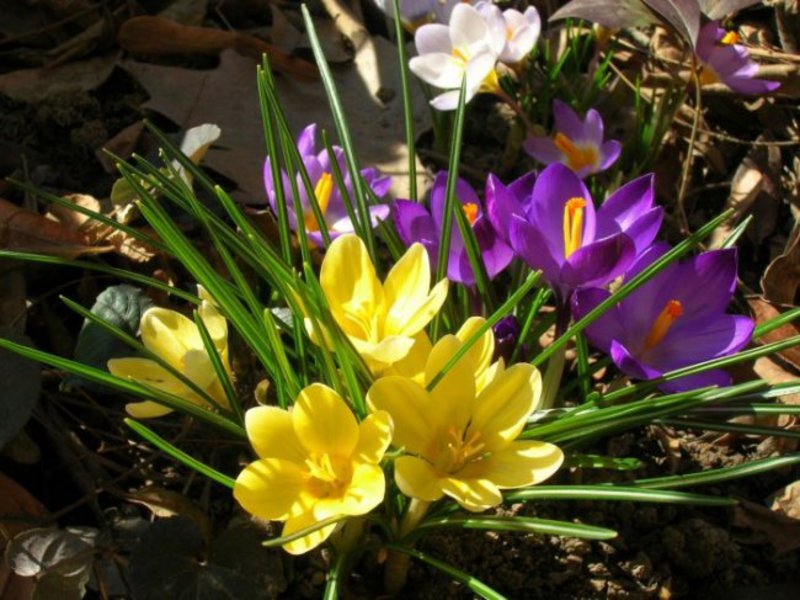
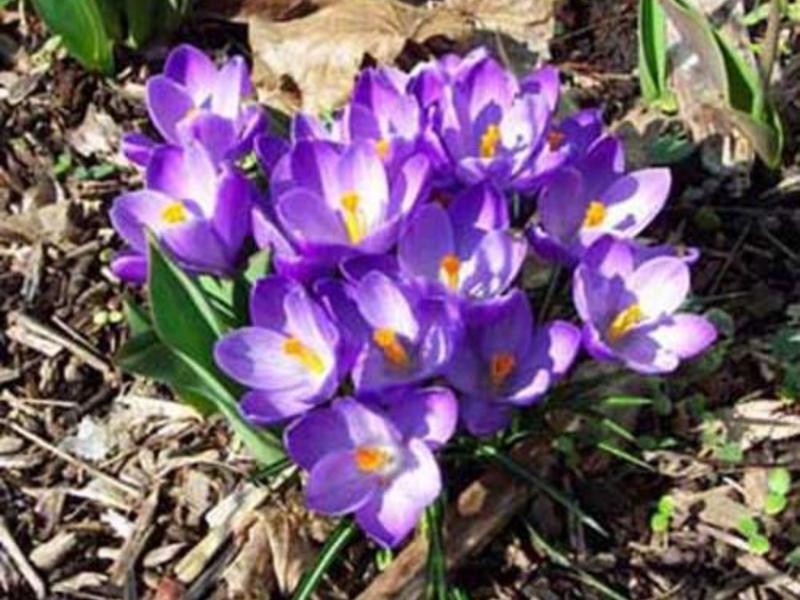

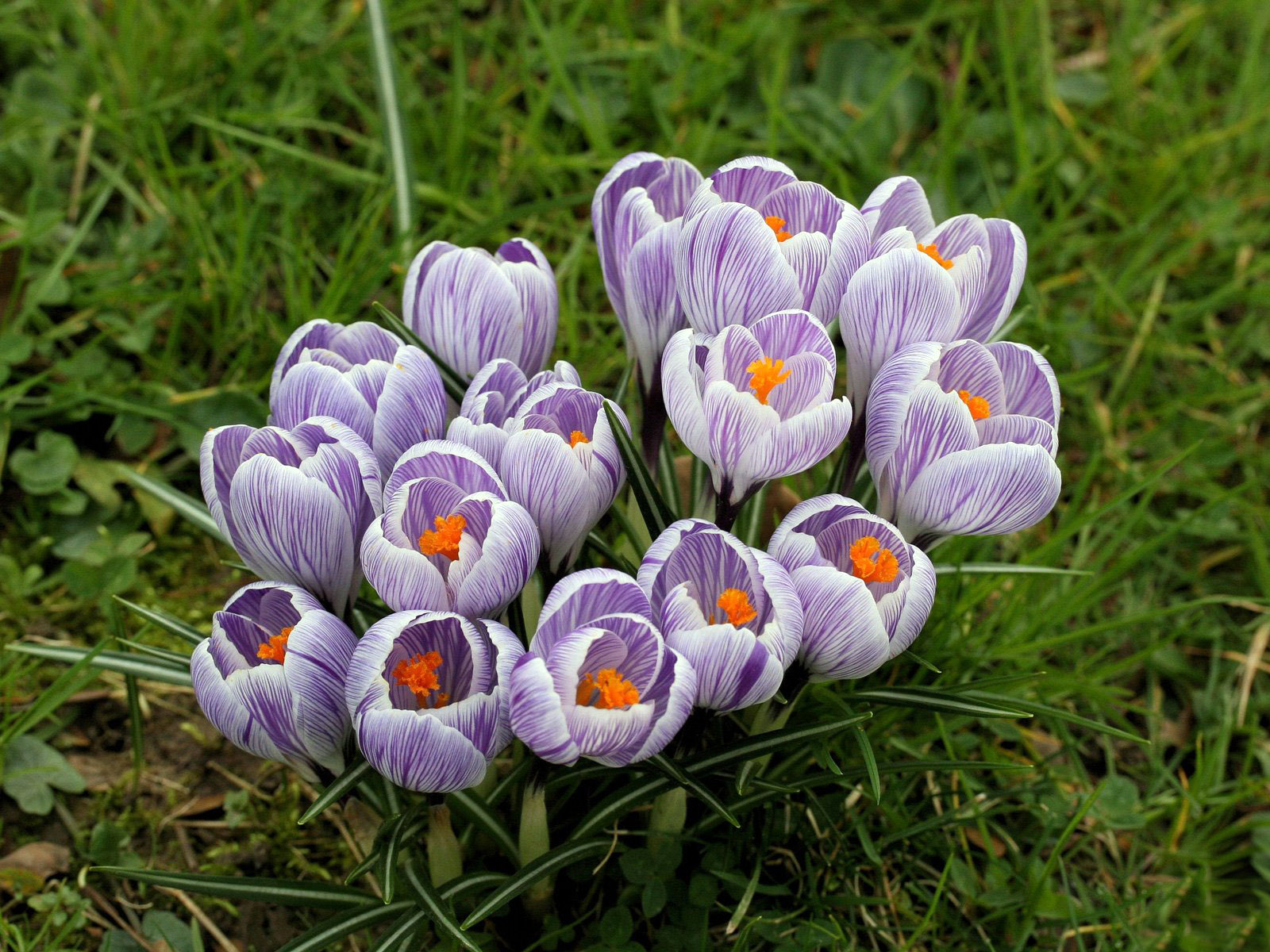
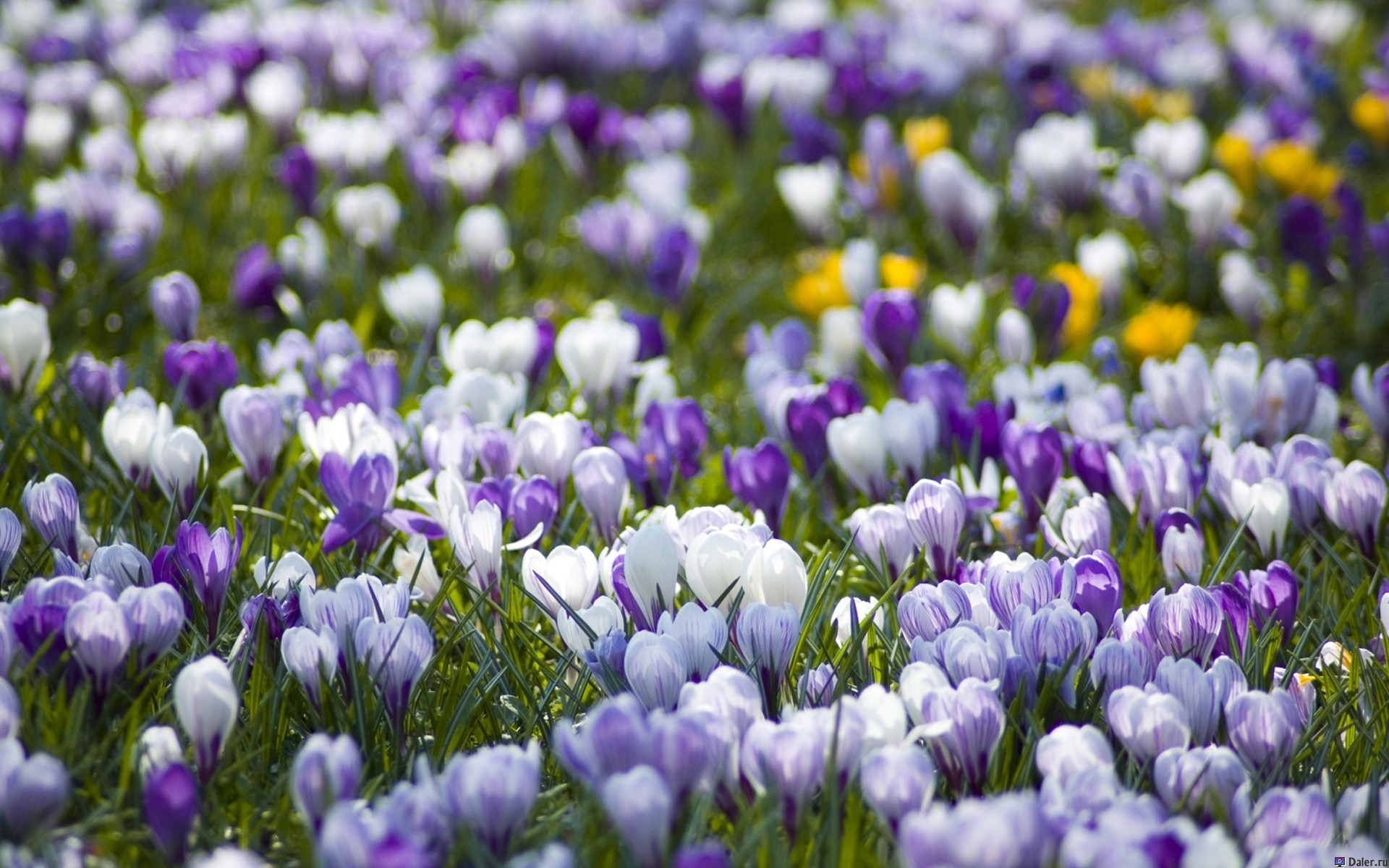
1 comment